Ultimate Guide to Hall-Effect Gimbals in RC Controllers
Hall-effect gimbals in RC controllers use magnetic sensors, providing smoother control and greater precision compared to traditional potentiometer gimbals. They are durable, require less maintenance, and offer enhanced flying experience.
“Precision in flight, a pilot’s greatest delight.”

Understanding Hall-Effect Gimbals in RC Helicopter Controllers
Hall-effect gimbals have revolutionized the way RC helicopter enthusiasts interact with their aircraft. Understanding what these gimbals are and how they enhance the flying experience is crucial for both beginners and seasoned pilots.
- Introduction to Hall-effect Gimbals Hall-effect gimbals utilize magnetic fields to detect joystick movement. Unlike traditional potentiometer-based gimbals, they do not rely on physical contact, which reduces wear and tear and increases longevity.
- Enhanced Precision and Control The Hall-effect sensors provide smoother and more precise control. This precision is particularly beneficial in delicate maneuvers and complex flight patterns.
- Durability and Longevity The lack of physical contact in the sensor mechanism means Hall-effect gimbals experience less wear, translating to a longer lifespan and consistent performance over time.
- Impact on Flight Experience Pilots often report a more responsive and intuitive flying experience. This is due to the enhanced precision and reduced dead zones in the joystick movement.
- Comparison with Potentiometer Gimbals Traditional potentiometer gimbals can develop dead zones and inaccuracies due to wear. Hall-effect gimbals maintain their accuracy and smooth operation for a much longer period.
- Customization and Sensitivity Adjustment Many RC controllers with Hall-effect gimbals offer software-driven adjustments, allowing pilots to fine-tune sensitivity and responsiveness to suit their flying style.
- Integration with Advanced Control Systems Hall-effect gimbals integrate seamlessly with advanced flight control systems, offering better compatibility with various flight modes and features.
- Cost vs. Performance Trade-off While Hall-effect gimbals tend to be more expensive than traditional gimbals, the improved control and durability often justify the investment for serious enthusiasts.
- The Future of Hall-effect Gimbals in RC Aviation Ongoing advancements are continually improving the performance and affordability of these gimbals, making them accessible to a wider range of pilots.
- Choosing the Right Gimbal for Your Needs When selecting an RC controller, consider your skill level, the type of flying you’ll be doing, and the importance of precision and longevity in your flying experience.
For more insights into advanced RC controllers, check out the FlySky Elysium EL18 Transmitter, redefining RC control with its innovative features.

Hall-Effect vs. Potentiometer Gimbals: A Comparative Study
When it comes to RC helicopter controllers, the choice between Hall-effect and potentiometer gimbals is crucial. Understanding their differences in durability and precision can greatly influence a pilot’s experience.
- Fundamental Differences Hall-effect gimbals use magnetic sensors, while potentiometer gimbals rely on physical contact for movement detection. This fundamental difference impacts their performance and longevity.
- Precision in Control Hall-effect gimbals offer superior precision due to their contactless nature. This results in smoother and more accurate control, essential for intricate maneuvers.
- Durability and Wear Potentiometer gimbals, due to their contact-based mechanism, are prone to wear and tear, leading to issues like dead zones and drift over time. Hall-effect gimbals, being contactless, suffer significantly less from these issues.
- Longevity and Maintenance The reduced wear in Hall-effect gimbals translates to a longer lifespan and less maintenance, making them a preferred choice for frequent flyers.
- Cost Comparison Initially, Hall-effect gimbals may cost more, but their durability often means lower long-term costs due to reduced need for replacements or repairs.
- Sensitivity and Responsiveness Pilots often find that Hall-effect gimbals provide a more responsive feel, enhancing the overall control experience.
- Environmental Factors Potentiometer gimbals can be susceptible to environmental factors like dust and moisture, which can degrade their performance. Hall-effect gimbals are generally more resilient in varied conditions.
- User Experience Feedback Feedback from pilots consistently highlights the improved experience with Hall-effect gimbals, especially in terms of smoothness and accuracy.
- Technological Advancements As technology progresses, the gap in performance and cost between these two types of gimbals is narrowing, making Hall-effect gimbals more accessible.
- Making the Right Choice When choosing between Hall-effect and potentiometer gimbals, consider factors like your flying frequency, precision requirements, and budget.
For a detailed review of a controller featuring advanced Hall-effect gimbals, refer to the comprehensive article on the JumperRC T-Pro V2.

Retrofitting Hall-Effect Gimbals into Existing RC Controllers
The possibility of upgrading existing RC helicopter controllers with Hall-effect gimbals is an intriguing option for many enthusiasts. This article explores the feasibility, benefits, and considerations of such a retrofit.
- Understanding Retrofitting Possibilities Retrofitting involves replacing the existing potentiometer gimbals in a controller with Hall-effect ones. This process can vary in complexity based on the controller’s design.
- Compatibility Considerations Not all controllers are suitable for retrofitting. It’s essential to check the compatibility of the Hall-effect gimbals with your specific controller model.
- Technical Expertise Required The process requires a certain level of technical skill. It’s often recommended to seek professional help unless you are confident in your electronics knowledge.
- Benefits of Retrofitting Upgrading to Hall-effect gimbals can significantly improve the precision and longevity of your controller, enhancing the overall flying experience.
- Cost vs. Benefits Analysis While retrofitting can be cost-effective compared to buying a new controller, it’s important to weigh the costs against the potential benefits and lifespan of your existing controller.
- Required Tools and Materials The retrofitting process typically requires specific tools and materials, including the Hall-effect gimbal kit, soldering equipment, and possibly some customization parts.
- Understanding the Retrofitting Process The process generally involves disassembling the controller, removing the old gimbals, and installing the new Hall-effect gimbals, along with any necessary wiring and calibration.
- Potential Challenges Challenges can include aligning the gimbals correctly, ensuring smooth operation, and calibrating them to work with the controller’s electronics.
- Post-Retrofitting Calibration After installation, proper calibration is crucial for ensuring that the new gimbals function correctly and provide the expected improvement in control.
- Conclusion: Weighing Your Options Retrofitting is a viable option for those looking to upgrade their controllers without the expense of purchasing a new one, but it requires careful consideration of the factors involved.
Discover more about innovative RC controllers in the detailed review of the Radiomaster TX16S, exploring its top features.
Analyzing the Cost Implications of Hall-Effect Gimbals
The decision to opt for Hall-effect gimbals in RC helicopter controllers over traditional potentiometer gimbals often comes down to cost. Understanding these implications is key for making an informed choice.
- Initial Purchase Price Hall-effect gimbals typically have a higher initial cost compared to potentiometer gimbals. This difference is due to the more advanced technology and materials used.
- Long-Term Durability The increased durability of Hall-effect gimbals can lead to lower long-term costs. Their longer lifespan means less frequent replacements.
- Maintenance and Repair Costs Hall-effect gimbals generally require less maintenance, which can save money on repairs and servicing over time.
- Performance and Efficiency The enhanced performance of Hall-effect gimbals can be a cost-effective investment for serious hobbyists or professionals who require precise control.
- Impact on Controller Prices Controllers equipped with Hall-effect gimbals are often more expensive. However, they also usually come with other high-end features.
- Retrofitting Expenses Retrofitting an existing controller with Hall-effect gimbals can be a cost-effective alternative to buying a new controller, though it does come with its own costs.
- Resale Value Controllers with Hall-effect gimbals may retain a higher resale value due to their longevity and performance advantages.
- The Cost-Benefit Analysis While the upfront cost is higher, the long-term benefits such as durability and precision can justify the investment for many users.
- Market Trends and Affordability As technology advances, the cost of Hall-effect gimbals is gradually decreasing, making them more accessible to a wider range of users.
- Making an Informed Decision Weigh the initial investment against potential long-term savings, performance needs, and your budget to make an informed decision.
For insights into a controller that exemplifies the advantages of Hall-effect gimbals, read the comprehensive review of the Radiomaster Zorro.

The Impact of Hall-Effect Gimbals on RC Helicopter Flying Experience
Hall-effect gimbals have significantly changed the flying experience for RC helicopter pilots. Their advanced technology offers numerous benefits that enhance control and enjoyment.
- Enhanced Control Precision The precise control offered by Hall-effect gimbals allows for more accurate and smooth maneuvering, essential for complex flight patterns.
- Improved Responsiveness These gimbals respond more accurately to pilot inputs, making the flying experience more intuitive and engaging.
- Increased Durability Their longer lifespan means consistent performance over time, contributing to a reliable flying experience.
- Reduced Maintenance With fewer maintenance requirements, pilots can spend more time flying and less time on upkeep.
- Advanced Customization Options Hall-effect gimbals often come with customization options, allowing pilots to tailor their controllers to their specific preferences.
- Impact on Learning Curve For beginners, the improved control can make learning easier, while experienced pilots can execute more advanced maneuvers.
- Enhanced Feedback and Sensation The smooth operation of these gimbals provides a more tactile and satisfying control feedback.
- Compatibility with Advanced Features Hall-effect gimbals are often part of high-end controllers that offer additional features like telemetry, multiple flight modes, and programmable switches.
- Confidence in Equipment Knowing that your controller is equipped with reliable and precise gimbals can increase confidence during flight.
- Overall Flying Satisfaction The cumulative effect of these benefits leads to a more enjoyable and satisfying flying experience.
Maintenance Guide for Hall-Effect Gimbals in RC Controllers
Hall-effect gimbals are known for their durability and low maintenance requirements. However, regular maintenance is still essential to ensure optimal performance and longevity.
- Understanding Hall-Effect Gimbal Maintenance Unlike potentiometer gimbals, Hall-effect gimbals do not suffer from wear due to physical contact, but they still require periodic maintenance.
- Regular Cleaning Keeping the gimbals clean is crucial. Dust and debris can accumulate and potentially interfere with the magnetic sensors.
- Calibration Checks Regularly check and recalibrate your gimbals as needed to ensure they are providing accurate inputs to the RC helicopter.
- Firmware Updates Keep the firmware of your controller updated. Manufacturers often release updates that can improve the performance and functionality of the gimbals.
- Physical Inspection Regularly inspect the gimbals for any signs of physical damage or loose components.
- Avoiding Moisture and Extreme Temperatures Protect your controller from moisture and extreme temperatures, which can affect the performance of the Hall-effect sensors.
- Lubrication Although less frequently needed, applying appropriate non-conductive lubricants can keep the gimbal mechanisms smooth.
- Professional Servicing If you encounter issues beyond basic maintenance, consider professional servicing to avoid damaging the sensitive components.
- Handling and Storage Proper handling and storage of the controller can prevent accidental damage to the gimbals.
- Long-Term Care Even with minimal maintenance requirements, taking good care of your Hall-effect gimbals will ensure they last as long as possible.
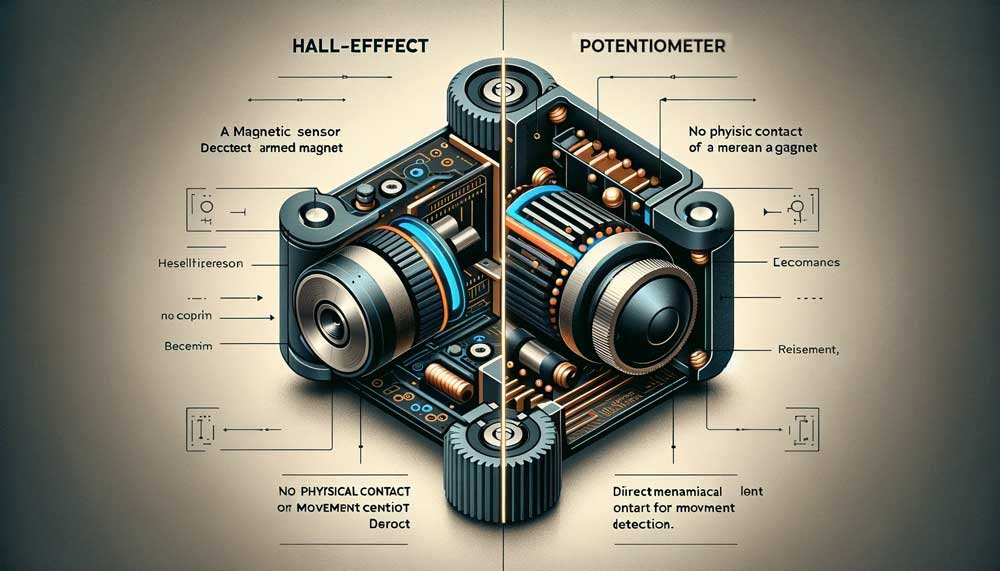
This image visually compares Hall-effect and potentiometer gimbals. The left side shows the Hall-effect gimbal, with its features like a magnetic sensor and a sleek design. On the right side, the potentiometer gimbal is illustrated with its characteristics, including a physical wiper and a more traditional mechanical look. Key components and differences in their technology and design are highlighted with labels and arrows.
Compatibility of Hall-Effect Gimbals with Various RC Helicopters
When integrating Hall-effect gimbals into your RC helicopter setup, understanding their compatibility with different helicopter models is key.
- Universal Compatibility Nature Hall-effect gimbals, in general, are compatible with a wide range of RC helicopters, as they mainly affect the controller’s input mechanism.
- Controller-Helicopter Compatibility The compatibility of your controller with your RC helicopter is more crucial than the specific type of gimbals it uses.
- Understanding Receiver and Transmitter Matching Ensure that your controller (transmitter) and the helicopter’s receiver are compatible in terms of frequency and protocol.
- Advanced Features and Functions Some advanced functions offered by controllers with Hall-effect gimbals may require specific compatibility with the helicopter’s systems.
- Customization and Configuration Controllers with Hall-effect gimbals often allow extensive customization, which can be tailored to suit different types of helicopters.
- Digital vs. Analog Signal Processing Ensure that the signal processing (digital or analog) of the gimbal is compatible with your helicopter’s receiver.
- Software and Firmware Considerations Keep the controller’s firmware updated for optimal compatibility, especially when using advanced features.
- Impact on Different Flying Styles Different types of RC helicopters (like 3D acrobatic or scale models) may benefit differently from the precision of Hall-effect gimbals.
- User Experience and Feedback Consult with other pilots or online forums for specific compatibility experiences and advice.
- Conclusion: Broad Compatibility with Considerations While generally compatible, it’s important to consider the specific requirements of your RC helicopter model and the advanced features of your controller.
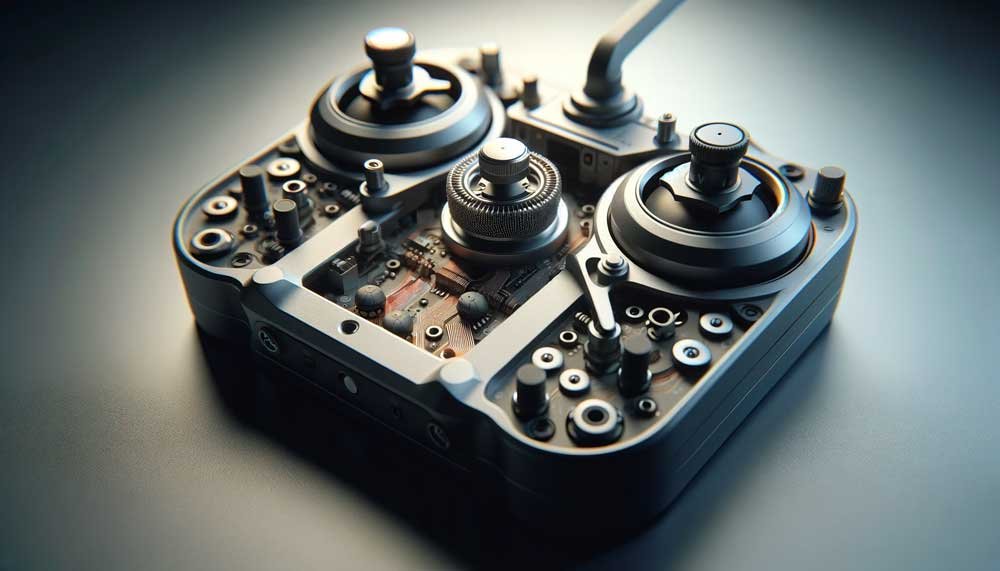
Environmental Impact on Hall-Effect Gimbals in RC Controllers
Environmental factors play a significant role in the performance of Hall-effect gimbals. Understanding these influences helps in ensuring optimal functionality during your RC helicopter flights.
- Temperature Sensitivity Hall-effect gimbals, like any electronic component, can be sensitive to extreme temperatures. High heat or cold may affect their responsiveness.
- Humidity and Moisture While Hall-effect gimbals are generally more resistant to moisture than potentiometer gimbals, excessive humidity can still cause issues.
- Dust and Debris Dust accumulation can interfere with the magnetic sensors, leading to decreased accuracy. Regular cleaning is important in dusty environments.
- Magnetic Interference Strong magnetic fields in the environment can disrupt the operation of the Hall-effect sensors. Avoid flying near large magnetic sources.
- Vibration and Shock Resistance Hall-effect gimbals are generally robust against vibrations and shocks, making them suitable for rugged outdoor conditions.
- Sunlight and UV Exposure Prolonged exposure to sunlight can cause wear on the controller’s external parts but usually doesn’t affect the gimbals’ performance.
- Altitude and Atmospheric Pressure These gimbals are generally unaffected by altitude and pressure changes, making them reliable for flying in various geographic locations.
- Handling and Storage Precautions Proper handling and storage can mitigate many environmental risks, such as avoiding leaving the controller in a hot car or near water sources.
- Long-Term Environmental Effects Over time, environmental factors can cumulatively affect the performance, necessitating regular checks and maintenance.
- Best Practices for Environmental Adaptation Understanding the environmental limitations and taking appropriate precautions can ensure consistent performance from your Hall-effect gimbals.
For an in-depth review of a controller well-suited for various environmental conditions, consider reading about the Radiomaster TX16S.

Future Advancements in Hall-Effect Gimbal Technology
The technology behind Hall-effect gimbals is continually evolving. Anticipating future advancements can give enthusiasts a glimpse into the next generation of RC helicopter controls.
- Increased Precision and Sensitivity Future gimbals are expected to offer even greater precision and sensitivity, enhancing control for complex maneuvers.
- Enhanced Durability and Lifespan Technological improvements may lead to even more durable gimbals, further extending their operational life.
- Improved Compatibility and Integration Advancements might include better compatibility with a wider range of RC helicopters and integration with emerging technologies.
- Miniaturization and Weight Reduction Ongoing miniaturization could lead to lighter gimbals, contributing to the overall reduction in controller weight and size.
- Energy Efficiency New designs might focus on energy efficiency, prolonging battery life in wireless controllers.
- Customization and User Personalization We may see more advanced customization options, allowing pilots to fine-tune their controllers to personal preferences and styles.
- Cost Reduction and Accessibility As the technology becomes more common, costs are likely to decrease, making Hall-effect gimbals accessible to more hobbyists.
- Enhanced Feedback Mechanisms Future gimbals might incorporate haptic feedback or other sensory enhancements to provide a more immersive control experience.
- Integration with Autonomous Flight Systems As autonomous flight technologies evolve, Hall-effect gimbals may integrate more seamlessly with these systems for hybrid control options.
- Keeping Up with Emerging Trends Staying informed about the latest advancements in gimbal technology can help enthusiasts make better purchasing decisions and enhance their flying experience.
Explore the latest in gimbal technology with the review of the Radiomaster Boxer.

User Skill Levels and Gimbal Choice in RC Helicopters
The choice between Hall-effect and traditional gimbals can depend significantly on the user’s skill level. This article explores how different pilots might prefer one over the other.
- Beginners and Ease of Use Beginners might find the smoothness and precision of Hall-effect gimbals more forgiving, aiding in the learning process.
- Intermediate Pilots and Control Needs As pilots develop their skills, the enhanced responsiveness and accuracy of Hall-effect gimbals can support more complex flying techniques.
- Advanced Pilots and Precision Requirements For advanced pilots, especially those engaged in competitive flying or complex maneuvers, the superior precision of Hall-effect gimbals is often non-negotiable.
- Casual Flyers and Cost Considerations Hobbyists who fly less frequently might opt for traditional gimbals due to their lower initial cost.
- Long-Term Investment Perspective More serious enthusiasts might view Hall-effect gimbals as a long-term investment, considering their durability and lower maintenance needs.
- Adapting to Technological Advancements As pilots progress, they might upgrade to Hall-effect gimbals to take advantage of the latest technological advancements.
- Specific Flying Styles Different flying styles, like 3D aerobatics or scale flying, can also influence the choice, with precision often being more critical in aerobatics.
- Maintenance Skills and Preferences Pilots who prefer low-maintenance setups may lean towards Hall-effect gimbals due to their reduced upkeep requirements.
- Personal Preference and Comfort Ultimately, the choice can also come down to personal preference and what feels most comfortable in the pilot’s hands.
- Making an Informed Choice Considering skill level, flying style, and personal preferences will help pilots make an informed choice between Hall-effect and traditional gimbals.
For insights into a controller suitable for various skill levels, check out the JumperRC T-Pro V2.
FAQs
FAQ1: How do Hall-effect gimbals improve RC helicopter control?
- Offer more precise and smoother joystick movement
- Provide higher durability and less wear over time
- Enhance overall flying experience with improved responsiveness
FAQ2: Are Hall-effect gimbals compatible with all types of RC helicopters?
- Generally compatible with a wide range of RC helicopters
- Important to check controller-helicopter frequency and protocol compatibility
- Some advanced controller functions may require specific helicopter compatibilities
FAQ3: What are the future trends in Hall-effect gimbal technology?
- Increased precision and sensitivity in control
- More durable and energy-efficient designs
- Enhanced compatibility with autonomous flight systems and advanced customization options
You May Also Like
Related Posts
RadioMaster Zorro Max: A Detailed Analysis
Explore the RadioMaster Zorro Max Radio Controller, a top choice for RC enthusiasts. Learn about its features, durability, and user feedback in this detailed review.
Maximize Your Flight: RadioMaster Boxer Max Review
Explore the RadioMaster Boxer Max’s advanced features, ergonomic design, and user-centric approach for an enhanced drone flying experience.
Unveiling Radiomaster TX12 MK II: A Pilot’s Dream Controller
Explore the Radiomaster TX12 MK II, a revolutionary RC controller offering unmatched precision, advanced features, and an enhanced flying experience.
More Models
RC ERA C129 V2 Review: What Makes It Stand Out
Explore the RC ERA C129 V2’s advanced features, its suitability for beginners, and how it’s revolutionizing remote-controlled flight.
Why Choose RC ERA C187 for Your Hobby
Explore the exciting world of the RC ERA C187 Helicopter. This guide offers tips, reviews, and techniques for beginners and pros alike.
RC ERA C127AI Review: Tech Specs and User Feedback
Explore the revolutionary RC ERA C127AI with advanced tech, user-friendly features, and expert reviews. Learn why it’s the top choice for RC enthusiasts.


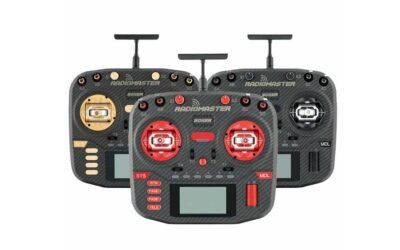
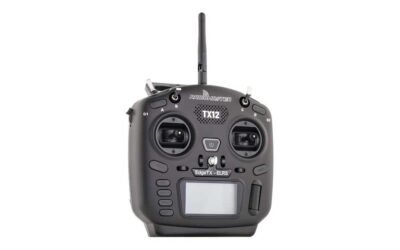
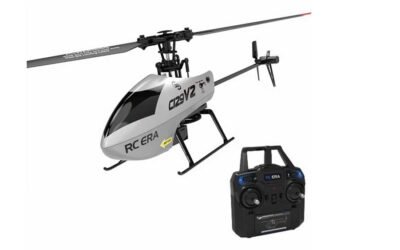
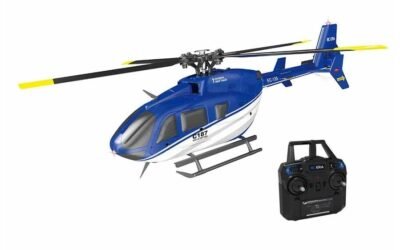
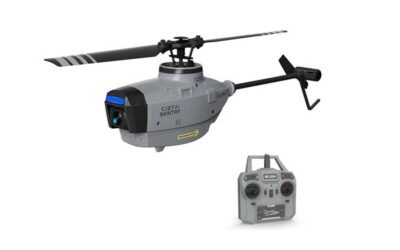
0 Comments